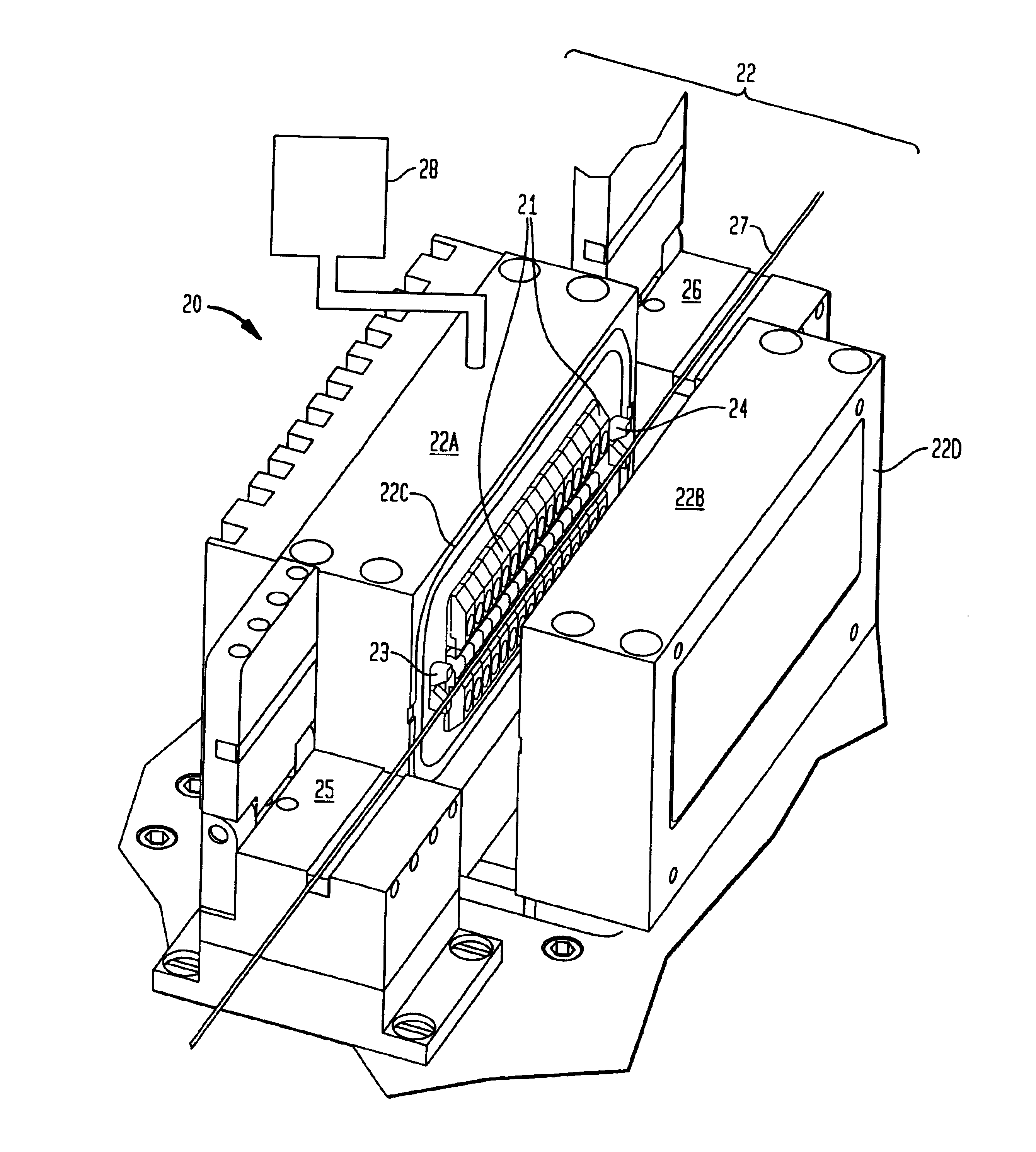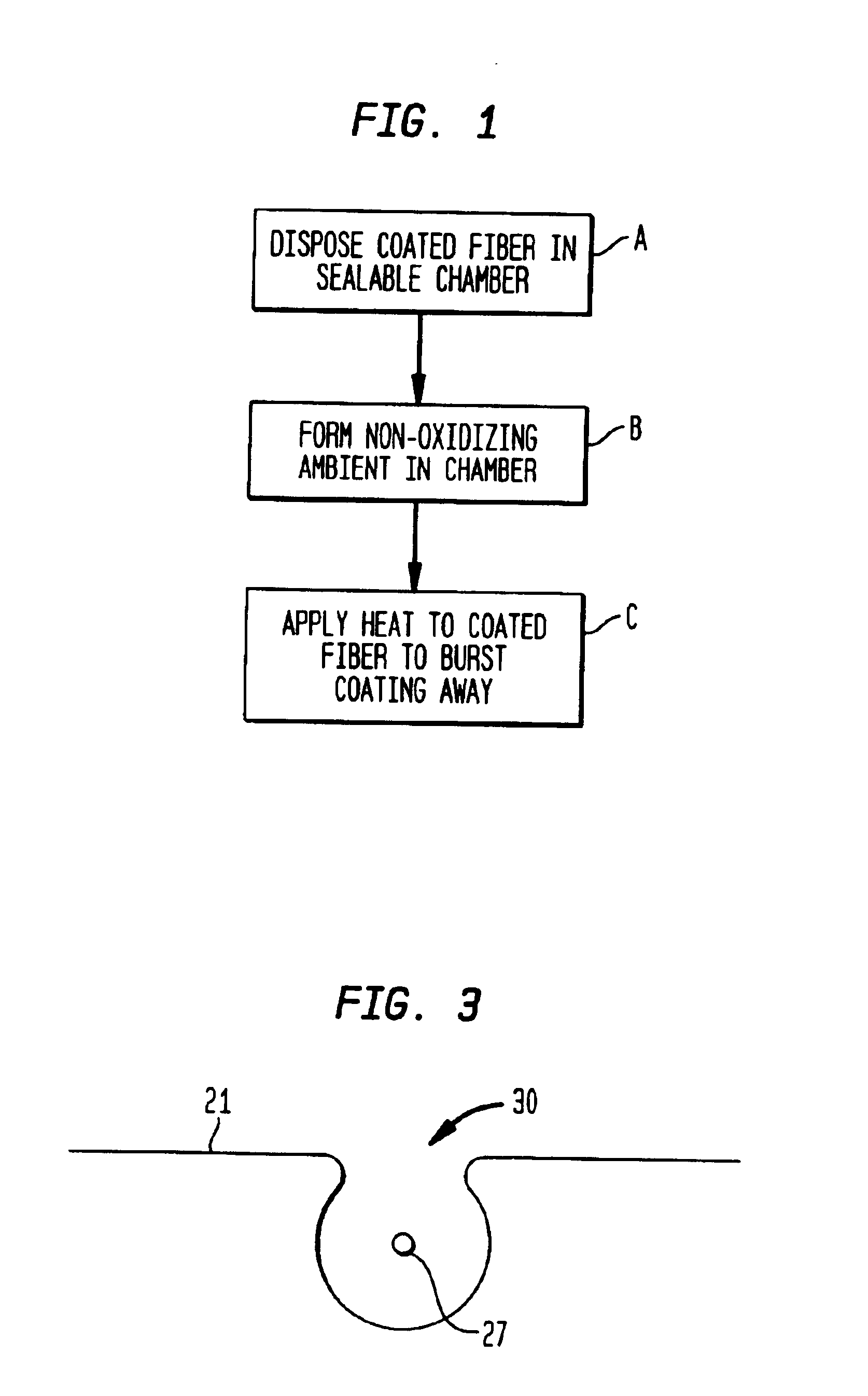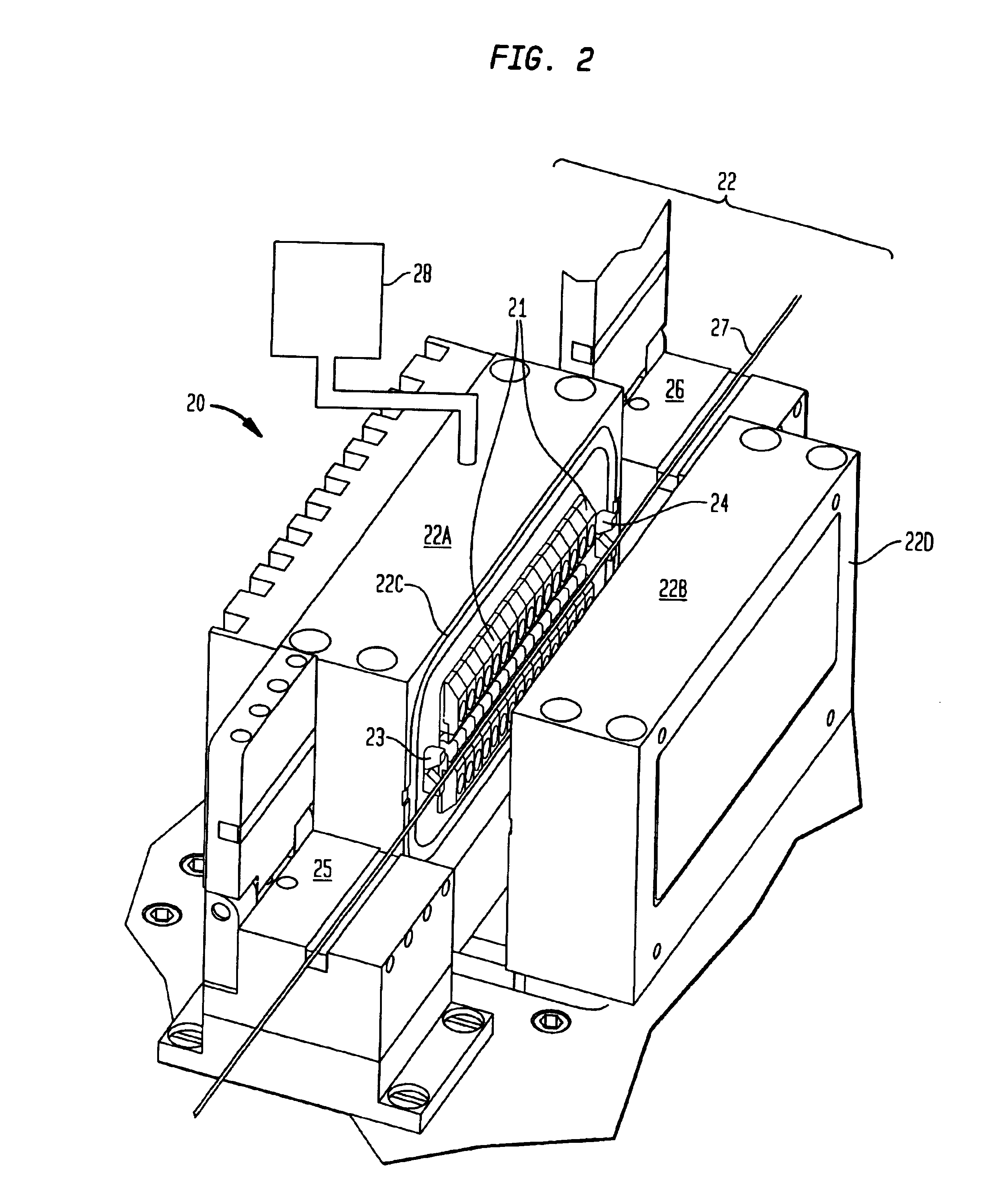Method and apparatus for removing polymeric coatings from optical fiber in a non-oxidizing environment
a technology of optical fiber and polymeric coating, applied in lighting and heating equipment, furnaces, furnace heating elements, etc., can solve the problems of glass fiber, no fiber polymeric coating is completely satisfactory, and no fiber polymeric coating removal method is used
- Summary
- Abstract
- Description
- Claims
- Application Information
AI Technical Summary
Problems solved by technology
Method used
Image
Examples
Embodiment Construction
[0012]Referring to the drawings, FIG. 1 is a block diagram of the steps involved in removing a polymeric coating from an optical fiber. The first step shown in block A is to dispose the coated fiber within a sealable chamber.
[0013]The next step (block B) is to form a non-oxidizing environment within the chamber. The chamber can be evacuated to a low pressure and filled with an inert gas such as Argon. The inert gas can be at ambient pressure (e.g. 1 atm) or below.
[0014]The third step shown in block C is to apply heat to the coated fiber. The heat should be sufficient to volatilize at least a portion of the coating without changing the phase of the glass. The heat should volatilize at least the most volatile components in the coating and cause the coating to burst from the fiber (explosive removal). The heat is preferably applied from a resistive filament within the evacuated chamber or from a laser, such as an infrared laser, within or outside the chamber. In typical cases involving...
PUM
| Property | Measurement | Unit |
|---|---|---|
| temperature | aaaaa | aaaaa |
| pressure | aaaaa | aaaaa |
| temperatures | aaaaa | aaaaa |
Abstract
Description
Claims
Application Information
 Login to View More
Login to View More - R&D
- Intellectual Property
- Life Sciences
- Materials
- Tech Scout
- Unparalleled Data Quality
- Higher Quality Content
- 60% Fewer Hallucinations
Browse by: Latest US Patents, China's latest patents, Technical Efficacy Thesaurus, Application Domain, Technology Topic, Popular Technical Reports.
© 2025 PatSnap. All rights reserved.Legal|Privacy policy|Modern Slavery Act Transparency Statement|Sitemap|About US| Contact US: help@patsnap.com



